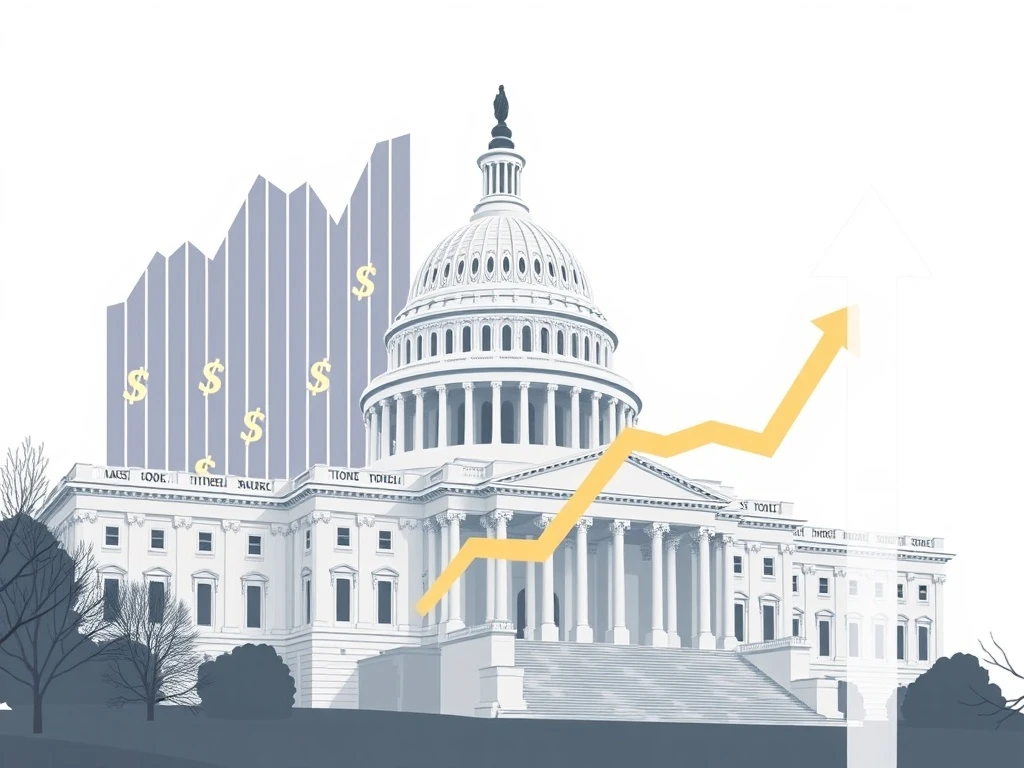Bank Secrecy Act: Crucial Modernization Promises Relief for Crypto Compliance

The financial world constantly shifts. For cryptocurrency businesses, keeping pace with regulatory changes is vital. A significant legislative initiative is now underway in the United States. It directly impacts how financial institutions, including crypto companies, manage anti-money laundering (AML) requirements. This proposed overhaul of the Bank Secrecy Act promises crucial modernization. It could streamline compliance efforts across the financial sector.
Modernizing the Bank Secrecy Act: A 50-Year Overhaul
The Bank Secrecy Act (BSA) forms the bedrock of America’s Anti-Money Laundering (AML) framework. Congress enacted this foundational law in 1970. Its primary purpose is to help federal authorities detect and prevent financial crimes. These include money laundering, terrorist financing, and other illicit activities. The BSA mandates that financial institutions assist law enforcement. They must maintain specific records and report certain transactions. Banks, credit unions, and even US-based crypto exchanges fall under its purview.
However, the BSA’s reporting thresholds have remained unchanged for over five decades. This long stagnation means they are badly outdated. Senator Pete Ricketts highlighted this issue. He stated, “After more than 50 years of inflation, the Bank Secrecy Act’s reporting thresholds are badly outdated. They must be modernized.” This sentiment reflects a broad consensus. The current thresholds create unnecessary burdens. They generate a vast volume of reports, many of which lack actionable intelligence. This situation strains resources for both financial institutions and law enforcement agencies. Consequently, a modernization effort has become essential.
The STREAMLINE Act: Unpacking New Reporting Thresholds
A bipartisan group of US senators has introduced landmark legislation. Led by Senate Banking Committee Chair Tim Scott (R-S.C.), they propose the STREAMLINE Act. This bill aims to update the BSA’s anti-money laundering rules. It specifically targets the long-standing reporting thresholds. This marks the first adjustment since the BSA’s inception more than 50 years ago.
The STREAMLINE Act proposes several key changes:
- Currency Transaction Report (CTR) Threshold: This will increase from $10,000 to $30,000. Financial institutions currently file CTRs for cash transactions exceeding $10,000.
- Suspicious Activity Report (SAR) Thresholds: These will also see increases. For transactions requiring a SAR due to suspicion, the threshold moves from $2,000 to $3,000. For transactions involving stronger evidence of criminal activity, the threshold rises from $5,000 to $10,000.
- Inflation Adjustment: Crucially, the bill mandates the Treasury Department to adjust these amounts every five years. This provision ensures future thresholds account for inflation. This prevents similar outdated scenarios in the future.
These adjustments aim to cut red tape for banks and credit unions. They will reduce the sheer volume of reports. At the same time, the changes ensure law enforcement retains necessary tools. Senator Ricketts affirmed this balance. He believes the new bill ensures “law enforcement still has the tools they need to do their job.”
Enhanced Crypto Compliance: What the Changes Mean for Digital Assets
The proposed changes within the STREAMLINE Act carry significant implications for the digital asset sector. US-based crypto exchanges, such as Coinbase and Kraken, already comply with the Bank Secrecy Act. They are classified as money service businesses (MSBs). Therefore, they must adhere to BSA requirements. This includes filing CTRs and SARs. Raising these reporting thresholds directly affects their operational procedures.
For crypto companies, the new thresholds could:
- Reduce Reporting Burden: Fewer low-value transactions will trigger automatic CTR filings. This frees up valuable resources for compliance teams.
- Improve Efficiency: Compliance teams can focus on truly suspicious activities. They will spend less time processing routine, often non-actionable, reports.
- Align with Modern Finance: The updated thresholds better reflect current economic realities. This provides a more sensible framework for digital transactions, which often involve smaller, frequent amounts.
This legislative effort coincides with broader discussions on crypto regulation. Industry groups are actively engaging lawmakers. For example, a coalition of fintech and crypto trade groups recently urged the US Consumer Financial Protection Bureau (CFPB) to finalize an open banking rule. This rule would affirm consumer ownership of financial data. Open banking links traditional finance with decentralized finance (DeFi) and crypto payment networks. Furthermore, Senate Democrats have met with crypto industry leaders. They discussed the US market structure bill. This bill aims to create a unified federal framework for digital asset regulation. Leaders from Circle, Ripple, Kraken, and Coinbase participated in these talks. The senators expressed commitment to passing a bill.
Navigating the Regulatory Landscape
The intersection of traditional finance laws and emerging digital assets presents unique challenges. The STREAMLINE Act represents a step towards modernizing existing frameworks. It acknowledges the evolving nature of financial transactions. However, the path to comprehensive crypto regulation remains complex. The US government shutdown, for instance, delayed votes on critical digital asset bills. This highlights the political hurdles involved. Ultimately, clear and consistent regulatory guidelines are essential. They foster innovation while mitigating risks within the crypto space.
Strengthening AML Regulations for a Digital Future
Effective AML regulations are critical for maintaining financial integrity. They protect against illicit finance. The current BSA framework, despite its age, has been a cornerstone of these efforts. However, criminals continuously adapt their methods. Therefore, regulations must also evolve. The STREAMLINE Act directly addresses this need for adaptation. It ensures that AML efforts remain robust and relevant.
The proposed changes strike a crucial balance. They reduce the administrative load on financial institutions. Yet, they preserve the essential tools for law enforcement. This ensures that genuine threats are not overlooked. Modernizing AML frameworks involves more than just threshold adjustments. It also requires embracing new technologies. Data analytics and artificial intelligence can enhance detection capabilities. Regulators and industry must collaborate. They can develop smarter, more efficient compliance systems. This proactive approach will strengthen the financial system against evolving threats. It will also foster innovation.
Beyond Reporting Thresholds: The Future of Financial Oversight
The push to update reporting thresholds signals a broader shift. Lawmakers are increasingly recognizing the need for adaptive financial oversight. This extends beyond the Bank Secrecy Act. The ongoing discussions about open banking and digital asset market structure illustrate this trend. These conversations aim to create a financial ecosystem that is both secure and innovative.
Open banking, for instance, empowers consumers. It allows them to share financial data securely with third-party applications. This interoperability is crucial for the growth of DeFi and digital payment platforms. Similarly, a unified federal framework for digital assets seeks to provide clarity. It aims to reduce regulatory fragmentation. These efforts collectively contribute to a more robust and responsive financial system. They acknowledge the increasing convergence of traditional and digital finance. The goal is to build a regulatory environment. This environment supports economic growth and protects consumers. It also combats financial crime effectively.
The proposed STREAMLINE Act marks a significant step. It aims to modernize the Bank Secrecy Act after five decades. By updating reporting thresholds for CTRs and SARs, Congress seeks to enhance efficiency. This legislative initiative will cut red tape for traditional banks and crypto compliance teams alike. It ensures AML regulations remain effective in a rapidly changing financial landscape. This crucial modernization promises to benefit all stakeholders. It creates a more streamlined and relevant framework for combating financial crime in the digital age. The financial industry, including the burgeoning crypto sector, awaits its passage.










